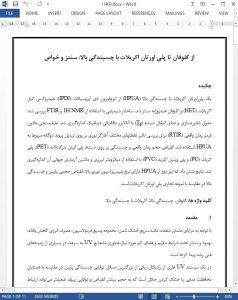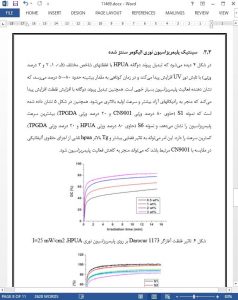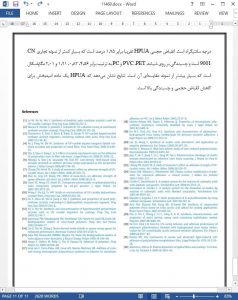Abstract
A high adhesion polyurethane acrylate (HPUA) was synthesized from isophorone diisocyanate (IPDI), hydroxyethyl acrylate (HEA) and hydrogenated rosin. The chemical structure was characterized by 1H NMR and FTIR; storage modulus and glass transition temperature (Tg) were measured with dynamic mechanical analyzer. Real time infrared spectroscopy (RTIR) was used to investigate the effect of different concentrations of photoinitiator on the double bond conversion of HPUA. Real time volume shrinkage and adhesion on glass, poly(ethylene terephthalate) (PET), polycarbonate (PC) and polyvinyl chloride (PVC) substrates were also measured by laser micrometer and universal testing machine. Results showed that this kind of HPUA has a high photopolymerization rate, low volume shrinkage and high adhesion compared with commercial polyurethane acrylate competitor.
1. Introduction
Owing to its numerous distinct advantages, such as instant drying, broad formulating range, reduced energy consumption, curing under mild conditions, and less space and capital requirement, UV-radiation technology has quickly developed in many high technical fields [1–3].
In a free radical UV-curing system, one of the biggest problems is low adhesion ability compared with solvent drying or thermo curing counterparts, which can be attributed to larger volume shrinkage and weaker bonding ability. It could lead to worse application properties and low fabrication resolution. The adhesion ability of UV-cured materials can be improved by a number of strategies including introducing organic-inorganic hybrid systems [4], long-chain structure compounds [5,6], and adding adhesion promoters [7] or inorganic nanoparticles [8,9]. However, even with such modifications, deficiencies still exist.
4. Conclusions
A novel polyurethane acrylate was synthesized from IPDI, HEA and hydrogenated rosin. The photopolymerization kinetics, characterized by real time FTIR, shows good reaction rate and photoinitiator concentration dependence. The storage modulus and the glass transition temperature of HPUA are about 3.25 GPa and 54.4 °C respectively according to DMA results. The volume shrinkage of HPUA is about 1.75%, much lower than commercial oligomer CN9001 and the adhesion to glass, PET, PVC and PC substrates are 4.56, 0.82, 1.91 and 2.01 MPa respectively, much higher than its comparing sample. The results indicate that HPUA is promising as a UV curing oligomer for low volume shrinkage and high adhesion demand.











